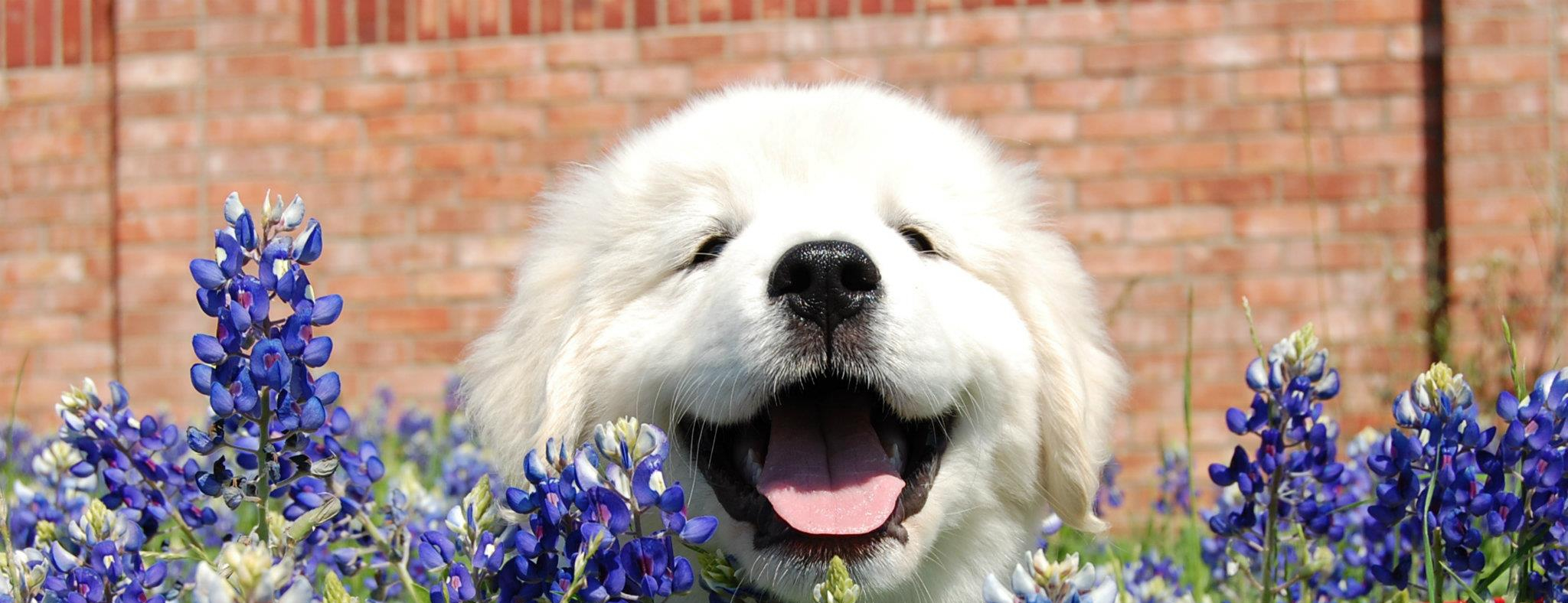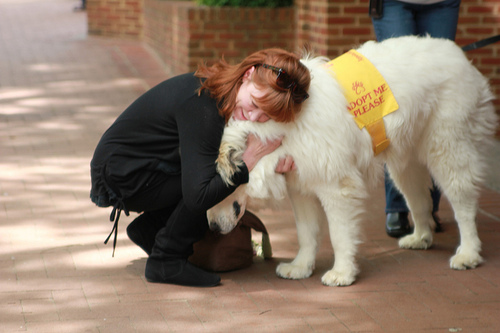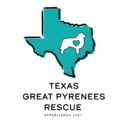
Adopting a Pyr
Why adopt a rescue dog?
“I need a puppy to grow up with my children. An older dog is too risky.”
“Rescue dogs already have issues and won´t bond with my family.”
“I need to train a dog my own way or it won´t be what I want.”
If you agree with the above statements, then a rescue dog may not be for you. It can have issues. It may not have the training you would expect of an adult dog. It may have never been around children before. But then again, it may be your perfect fit! Isn’t this worth looking into? Many (about half) of our dogs are “discards” coming from owners, where they have already been family pets at one time or another. The time they spend with our rescue fosters gives us time to assess their personalities and behaviors, to see what they know and what stresses them.
IF YOU ADOPT A RESCUE
- You can get a dog that is mature, already housebroken, and out of the “destructive stage” of puppyhood. We have a variety of Pyrs of varied ages available most times.
- The adoption fee you are asked to contribute is significantly less that a new puppy´s expenses will be. If we are lucky, it pays for the medical work we put into your dog to get it ready for you.
- Your rescue dog is already spayed or neutered, so you don´t have to worry about the surgery, the recovery time, or health and behavioral issues that can arise from a dog not being altered.
- You make one small step toward eliminating the cycle of euthanasia of all the unwanted pets in the world.

Many of our adopters come back and say that they don’t understand how someone could have given up their Pyr — it is an awesome addition to the family and they are so pleased! Remember-great dogs don’t always have great pasts, and that is why there is rescue. Pyrs get left behind when owners move, become ill, or die. They get sent to rescue because they cost more to maintain than was anticipated, or it takes more time to care for than the owner has, or the dog just got too big. Maybe it was a pet for the kids, who are now teens, or who lost interest. Maybe it was ignored or chained out, so the dog became bored and destructive and dug a trench in the back yard. Maybe the family neglected to train it, so it is unruly and embarrassing when company comes over. Whatever the reason, rescue is often the only chance a dog will get to find it a new permanent home. But there are more dogs than there are open rescue spots, so your adoption of one really does save the life of another as well.
If you must have a puppy, realistically, they are few and far between in rescue. You might be waiting quite awhile. If you decide to go to a breeder, please seek a reputable one that takes good care of the parents, worms and vaccinates the pups, has health guarantees, such as a guarantee that the hips of the parents are good, and doesn´t release the pups until they are 8 to 10 weeks old. This breeder will take the puppy back should you find that it is not a good match for you and will be available to answer your questions throughout the life of your Pyr. Seek assistance from your local Great Pyrenees club or the American Kennel Club to locate a reputable breeder near you. There is often a waiting list for puppies at a good breeder.
Classified newspaper ads, sitting by the side of the road, or the dollar store parking lot are not places where you will locate this reputable breeder. They don´t hang “Pups for Sale” signs on the side of a pickup truck and wait for people to drive by and stop. “Backyard breeders” are the reason for so many genetic health issues and unwanted animals. While they may own two purebred Pyrs that are even AKC registered, the Pyrs may not have good bloodlines, pups may have genetic defects (that appear later in life), and many times the pups that they don´t sell are dumped at local shelters, dropped in the country, or even placed in garbage bins. When you buy from them, you are providing the breeder with a significant rewarding income, so they will breed their dogs again (often too soon), and the cycle continues. And when the breeding pair gets too old to produce, they are dumped at the local shelter as well since they are no longer useful. This is often what is referred to as a “puppy mill” where dogs live and breed in cages, always with money in mind, rather than the health and safety of the animals. Some dogs never set foot on grass, some never run and play, some never live in a nice cool air conditioned home. While you may not purposefully buy a pup from someone like this, make sure you know that your pup isn´t coming from a situation like this. Do your research and check the breeder out first.
How do I adopt through rescue?
Complete an adoption application. This will ask you questions about your home life, your family, and any other pets in the household. It helps to give the rescue coordinator an idea of what dog will compliment your family dynamics.
The Rescue Coordinator will call you to discuss your application, clarify any information, and make sure you know the responsibility you are about to take on. This is a great opportunity to ask questions about the breed and share any concerns.
The Rescue Coordinator will check personal references that you provide, and your vet reference (if you own any current animals).
The Rescue Coordinator will schedule a home visit to inspect your home. This is not to make sure you vacuum and dust weekly, but to point out any areas that might need improvement (slats in fence too wide in a spot), and to meet your family members and resident pets. Having that knowledge assists when assessing which dog will be a good fit.
Once approved, we seek a suitable dog match. Arrangements are made for an introduction day, and if all goes well, adoption follows.
How much does it cost to adopt a Pyr?
Adoption fees as of April 1, 2024:
• Puppies (one year and under) $400.00 plus transaction fees
• Adults (over one year) $350.00 plus transaction fees
• Seniors (7 years and over) $200.00 plus transaction fees
Getting Started
Fill out the online application and follow the directions on the application and provide us with as much information as possible to avoid delays in processing your application. If you have questions concerning your application after it has been submitted, please visit our contacts page to send and mail the area coordinator, who will then contact you to answer your questions.

